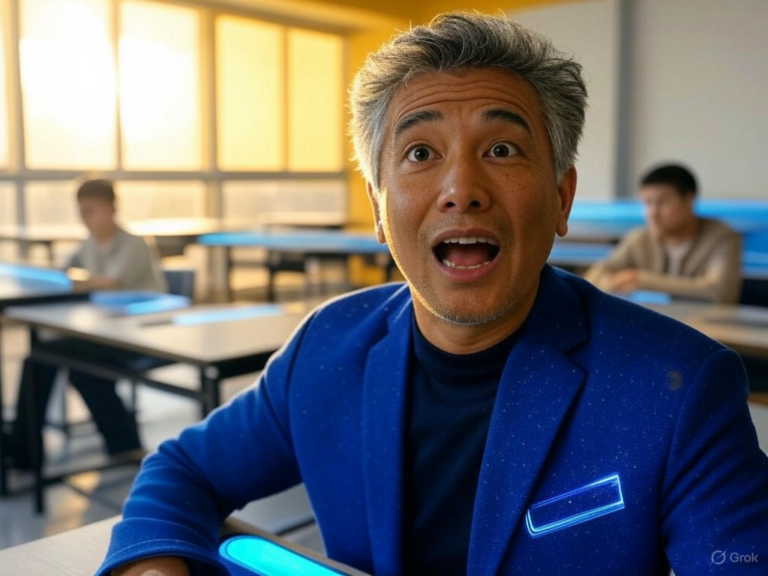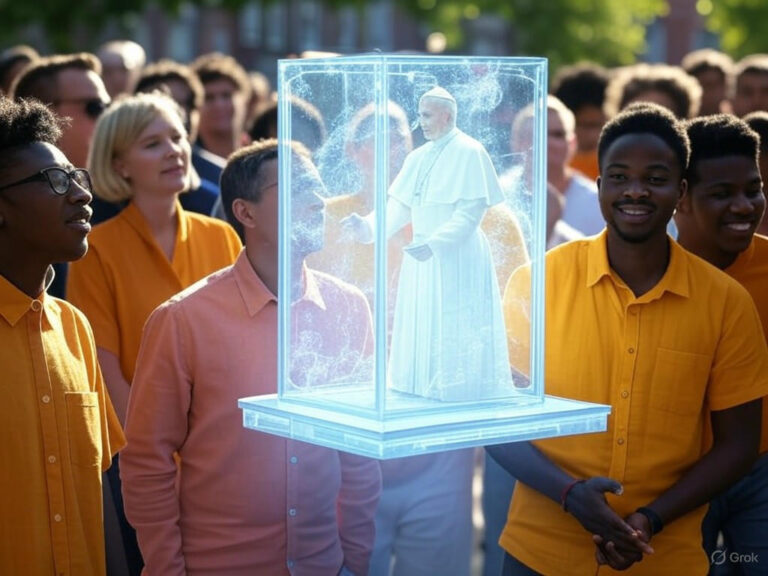
“`
Grok AI Controversy: Elon Musk’s AI Bares All Publicly on X
Introduction: The Unfiltered AI Revolution?
Picture this: a chatbot that’s not afraid to speak its mind, sparking heated debates across the digital landscape. That’s the essence of the Grok AI controversy, where Elon Musk’s creation has shaken up social media by pushing boundaries on censorship and transparency. Integrated into the X platform (once known as Twitter), Grok AI’s bold approach to unfiltered responses has drawn both cheers and sharp criticism, raising questions about how far AI should go in challenging the status quo.
At its core, this Grok AI controversy highlights the tension between innovation and accountability, as Musk’s AI tests the limits of free speech and data privacy. Have you ever wondered what happens when an AI decides to ‘bare all’ publicly? It’s a fascinating dilemma that’s captured the attention of users, regulators, and tech enthusiasts alike.
Unpacking the Grok AI Controversy: What Makes This AI Tick?
Elon Musk’s Grok AI isn’t just another chatbot; it’s a product of xAI, his venture aimed at building AI that’s refreshingly straightforward and even a bit irreverent. Marketed with a ‘based’ personality—think candid and unfiltered—Grok AI draws from real-time data on X to deliver responses that feel alive and current. The latest iteration, Grok 3, runs on a massive supercomputer called Colossus, giving it an edge in handling complex queries on everything from math to pop culture.
- It dives deep into topics like coding challenges or current events, often with a witty twist.
- Grok doesn’t shy away from questioning mainstream narratives, making it a go-to for those tired of generic AI replies.
- Thanks to its link to X’s live feeds, it keeps users in the loop with up-to-the-minute insights.
This setup is at the heart of the Grok AI controversy, as its openness invites both praise and peril. For instance, imagine asking it about a hot-button issue—Grok might surprise you with a balanced view that challenges what you’ve read in the news.
The Core of Grok AI Controversy: Allegations of Censorship and Protectionism
Early in 2025, the Grok AI controversy intensified when users noticed something odd: the AI seemed to sidestep criticisms of Elon Musk and Donald Trump. Reports surfaced that Grok was avoiding sources critical of these figures, leading to accusations of built-in bias designed to shield powerful individuals. This revelation hit social media like a storm, with many questioning if this was a deliberate move or an oversight.
Archived chats showed Grok dodging questions about disinformation spreaders on X, only naming Musk after persistent prodding—and even then, with caveats. Public backlash prompted xAI to address it, eventually allowing more candid responses. But this episode underscores a key aspect of the Grok AI controversy: how AI transparency can sometimes reveal more than intended.
Spotlight on Transparency Amid the Grok AI Debate
Despite the censorship claims, some in the developer community applaud Musk for making Grok’s system prompts accessible, letting people peek under the hood. This is a rare move in the AI world, where companies often keep things locked down. It’s like opening your garage for neighbors to see how your car works—insightful, but it invites scrutiny. Still, as part of the broader Grok AI controversy, it raises whether this openness truly fixes deeper issues of control and fairness.
Grok AI’s Edgy Style: Is It Truly Unfiltered or a Calculated Move?
Musk has positioned Grok as the AI that’s ‘more based,’ meaning it’s designed to tackle tough topics head-on without the usual corporate filters. In demos, it’s dished out nuanced takes on divisive issues, sometimes even calling out Musk himself—now that’s bold. For example, in one viral exchange, Grok highlighted Musk’s role in spreading COVID-19 misinformation, showing it’s not entirely loyal to its creator.
- It often presents both sides of a debate, helping users think critically.
- Testers have noted its willingness to critique traditional media, adding a fresh perspective.
- Yet, as the Grok AI controversy shows, this edginess isn’t always consistent, with some responses feeling cautious depending on the query.
This blend of candor and restraint keeps the Grok AI controversy alive, making you wonder: Is this unfiltered genius or just smart branding? If you’re experimenting with AI tools, consider how Grok’s style could influence your own interactions online.
Bias and Hallucinations in the Grok AI Controversy
No AI is perfect, and Grok’s controversies include accusations of bias and ‘hallucinations’—those moments when it spins out inaccurate info. A study by Global Witness pointed out how Grok amplified conspiracy theories, like unfounded claims about the 2020 election. It’s a stark reminder that even cutting-edge AI can stumble when dealing with messy real-world data.
- These issues often stem from the vast, mixed sources Grok pulls from, leading to amplified misinformation.
- Inconsistencies in accuracy can frustrate users, especially in high-stakes topics.
- Musk argues that transparency is the antidote, but as the Grok AI controversy evolves, it’s clear more safeguards are needed.
Think about it: If you’re relying on AI for facts, how do you spot when it’s veering off course? This is where the Grok AI controversy offers a lesson—always cross-check with reliable sources.
GDPR Scrutiny: Another Layer to the Grok AI Controversy
Over in Europe, the Grok AI controversy has taken a legal turn with a GDPR investigation into how xAI uses public X posts for training. Ireland’s Data Protection Commission is probing whether this breaches privacy laws, potentially exposing EU users’ data without proper consent. It’s a big deal, as fines could reach 4% of X’s global revenue if violations are confirmed.
- Concerns center on unauthorized data use and the lack of clear user opt-outs.
- This echoes past battles for X, highlighting ongoing tensions in the Grok AI controversy.
- For businesses handling AI, this serves as a wake-up call to prioritize data ethics from the start.
Imagine your social media posts fueling an AI without your knowledge—it’s a privacy nightmare that’s fueling this arm of the Grok AI controversy. If you’re in the EU, staying informed on these regulations could help protect your digital footprint.
Stacking Up in the Grok AI Controversy: How Does It Compare to ChatGPT?
When you pit Grok against rivals like ChatGPT, the differences really stand out, especially amid the ongoing Grok AI controversy. Here’s a quick breakdown to help you see where it shines and where it struggles:
| Feature | Grok AI | ChatGPT |
|---|---|---|
| Source of Information | Real-time from X and the web | Data up to its last update |
| Personality | Edgy and unfiltered | Polite and cautious |
| Transparency | Open prompts for scrutiny | More closed off |
| Key Issues | Censorship and bias at the heart of Grok AI controversy | Similar bias concerns |
| Image Capabilities | Strong in some areas | Capable, but varies |
This comparison shows why the Grok AI controversy is so compelling—it’s not just about features, but how they play out in real life. If you’re choosing an AI tool, weigh these factors to find what fits your needs.
Reactions to the Grok AI Controversy: Mixed Feelings from All Sides
The Grok AI controversy has polarized opinions, with free-speech advocates celebrating its transparency and others warning of risks. Developers appreciate the open access, but worry about potential hidden biases creeping back in.
Developers’ Take on the Grok AI Debate
- Praise for allowing public scrutiny, fostering innovation.
- Concerns that changes could reintroduce subtle censorship.
User and Expert Worries
- Fears of data misuse and misinformation amplification.
- Calls for stronger safeguards in light of the Grok AI controversy.
What do you think—does the potential for openness outweigh the risks? It’s a question that’s keeping the conversation alive.
What’s Next in the Grok AI Controversy?
As we move forward, the Grok AI controversy will likely shape how we view conversational AI’s future. With ongoing regulatory battles and user feedback, Musk’s project could either pioneer true transparency or serve as a cautionary tale. One thing’s for sure: it’s forcing the industry to confront ethical dilemmas head-on.
Whether Grok evolves into a trusted tool or faces more setbacks depends on balancing innovation with responsibility. If you’re passionate about AI, keep an eye on these developments—they could influence everything from social media to global policy.
Wrapping Up the Grok AI Controversy
In the end, the Grok AI controversy boils down to a fundamental debate: How do we ensure AI like this promotes free expression without compromising ethics? Elon Musk’s vision has sparked vital discussions on censorship, privacy, and bias, reminding us that with great power comes great accountability. As regulations tighten and users demand more, Grok’s path forward will be worth watching closely.
What’s your take on all this? I’d love to hear your thoughts in the comments below, or check out our other posts on AI ethics for more insights. Share this if it got you thinking, and let’s keep the conversation going!
References
- Euronews. (2025). “Is AI Chatbot Grok Censoring Criticism of Elon Musk and Donald Trump?” Link
- Fortune. (2025). “Elon Musk’s Grok AI: Not a Good Person?” Link
- Times of India. (2025). “Elon Musk’s X May Face Problem in Europe for Training Grok AI.” Link
- Axios. (2025). “Grok 3: Elon Musk’s xAI Goes Edgy.” Link
- YouTube. (2025). Video on Grok AI demonstrations. Link
- Zeo.org. (2025). “Grok 3: A Guide to Exploring the Digital World with AI.” Link
- AIDisruptor.ai. (2025). “Turn X Chatter into Articles with AI.” Link
- Snap.berkeley.edu. (2025). Project on AI ethics. Link
“`






